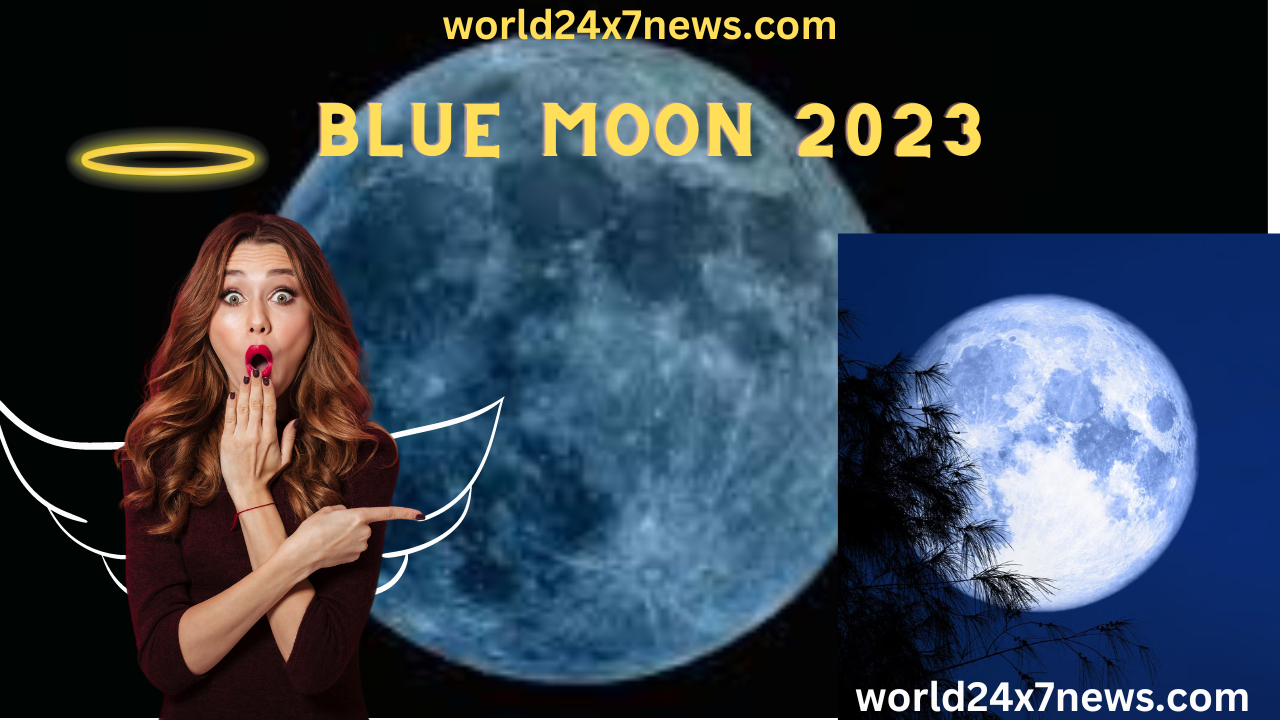Blue Moon 2023: A Rare Celestial Phenomenon

Blue Moon 2023: A Rare Celestial Phenomenon
Introduction
The enchanting world of celestial events never ceases to amaze us. One such captivating occurrence is the phenomenon of a “Blue Moon.” In 2023, skywatchers and astronomy enthusiasts are in for a treat as a Blue Moon graces the night sky. Let’s delve into the details of what a Blue Moon is, the science behind it, and how you can witness this rare event.
Understanding the Blue Moon Phenomenon
Defining a Blue Moon
Contrary to its name, a Blue Moon rarely appears blue in color. Rather, it refers to the second full moon occurring within a single calendar month. This intriguing phenomenon doesn’t alter the moon’s hue, but it does offer a unique opportunity for stargazers to appreciate our lunar companion.
Types of Blue Moons
There are two types of Blue Moons: the monthly Blue Moon and the seasonal Blue Moon. The former refers to the second full moon in a month, while the latter is the third of four full moons in a season. Both variations add a touch of celestial rarity to our night sky.

What Makes the Moon Appear Blue?
Despite its name, a Blue Moon’s coloration is not due to its actual hue. Instead, the moon can appear blue when certain atmospheric conditions, such as the presence of smoke or dust particles of a specific size, scatter red light and allow blue light to pass through. This scattering can result from natural events like volcanic eruptions or large-scale forest fires.
The Science Behind the Blue Moon
Lunar Cycles and Calendar Quirks
The moon’s orbit around the Earth takes approximately 29.5 days, leading to the average length of a month. However, our calendar months are usually 30 or 31 days long. This discrepancy can occasionally create the opportunity for two full moons to occur in a single month, giving rise to the term “Blue Moon.”
Atmospheric Conditions and Light Scattering
The moon’s appearance is primarily influenced by the Earth’s atmosphere. When particles in the atmosphere scatter light, it can lead to breathtaking optical phenomena. While a Blue Moon doesn’t usually appear blue to the naked eye, the interplay of particles can create a bluish tinge, although this is a rare occurrence.
Historical Significance and Folklore
Throughout history, the moon has held cultural significance and inspired countless myths and legends. The term “Blue Moon” has found its way into idioms, literature, and songs, often symbolizing rarity and the unusual. Its infrequent occurrence has also contributed to its mystique.
Mark Your Calendars: Blue Moon in 2023
Dates and Timings to Remember
In 2023, the Blue Moon is set to grace the night sky in [insert month]. The exact date may vary based on your location, so it’s advisable to consult local astronomical resources to ensure you don’t miss this remarkable event.
How Often Do Blue Moons Occur?
Blue Moons are relatively rare, as they occur about once every two to three years. This rarity adds to the allure of witnessing this lunar spectacle, making it an event sky enthusiasts eagerly anticipate.
Factors Influencing the Moon’s Appearance
Several factors can influence the moon’s appearance during a Blue Moon. The presence of particles in the atmosphere, weather conditions, and the observer’s location all play a role in determining whether the moon will showcase a subtle bluish hue.
Tips for Observing the Blue Moon
Locating the Moon in the Night Sky
Finding the moon during its full phase is a straightforward task, as it’s one of the brightest objects in the night sky. However, knowing where to look and when can enhance your viewing experience, especially during a Blue Moon.
Telescopes and Binoculars for Enhanced Viewing
While the moon is easily visible with the naked eye, using a telescope or binoculars can reveal intricate details on its surface. Craters, lunar seas, and other features become more apparent, offering a deeper connection to our celestial neighbor.
Capturing the Moon’s Beauty Through Photography
Photographing the moon is a rewarding endeavor. To capture its mesmerizing beauty, use a camera with manual settings and a tripod for stability. Experiment with different exposures to find the perfect balance between the moon’s brightness and surrounding darkness.
The Global Fascination with Celestial Events
Cultural and Artistic Representations
Across cultures, the moon has been a symbol of mystery, emotion, and artistic inspiration. Artists, writers, and musicians have drawn upon the moon’s beauty to create timeless works that reflect our connection to the cosmos.
Community and Social Media Engagement
In today’s digital age, celestial events like Blue Moons unite people from around the world. Social media platforms allow enthusiasts to share their observations, photographs, and insights, fostering a sense of global community.
Inspiring Scientific Curiosity Among All Ages
Celestial events offer an excellent opportunity to spark scientific curiosity, particularly among young minds. Witnessing a Blue Moon can lead to discussions about lunar science, astronomy, and the wonders of the universe.
Debunking Blue Moon Myths
The Moon’s Actual Color During a Blue Moon
Despite its name, the moon retains its usual color during a Blue Moon event. The term “Blue Moon” refers to the occurrence within the calendar, not its physical appearance.
Influence on Human Behavior and Emotions
While some legends attribute changes in human behavior to a Blue Moon, scientific research has found no substantial evidence to support such claims. Human emotions and actions remain unaffected by lunar phases.















